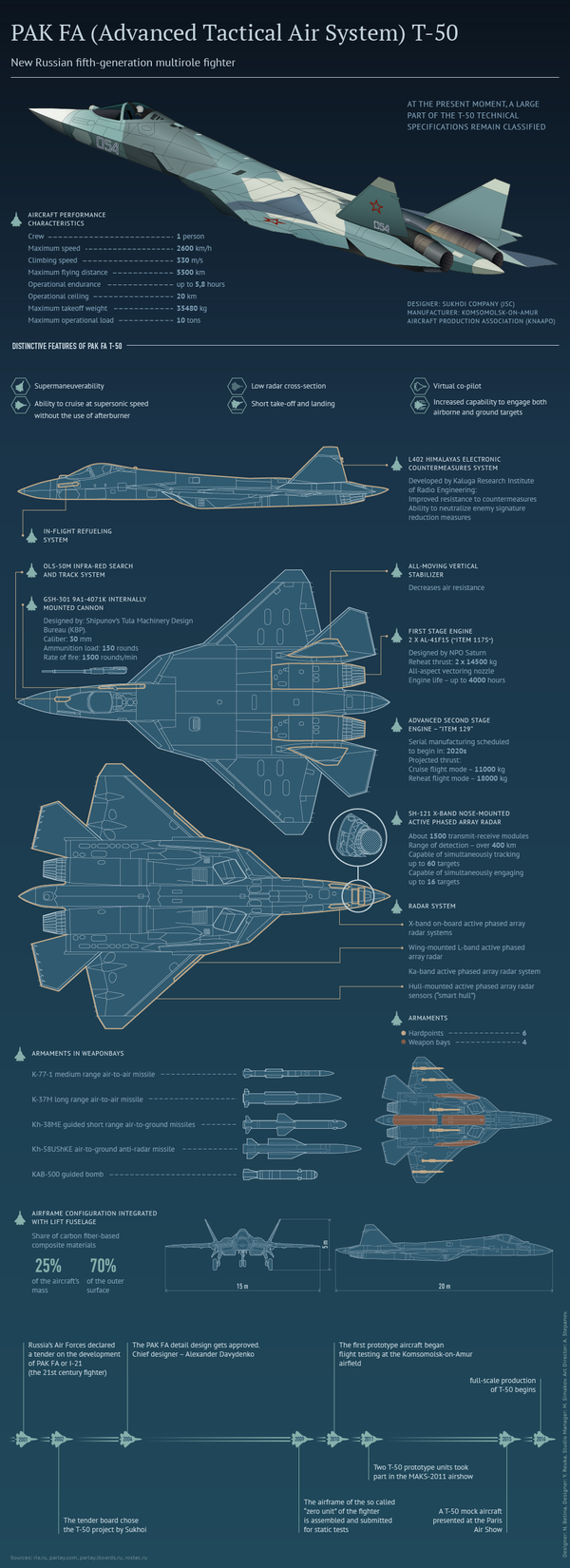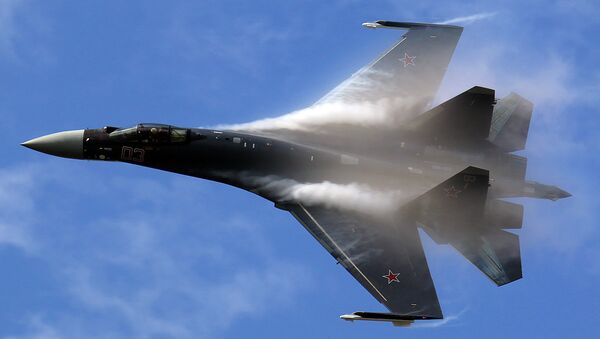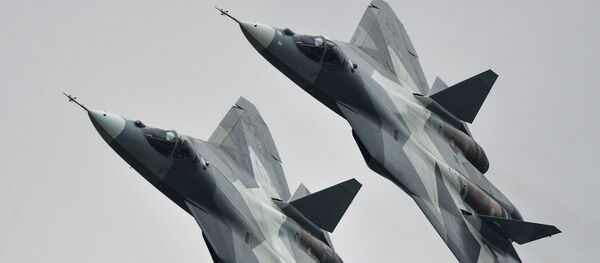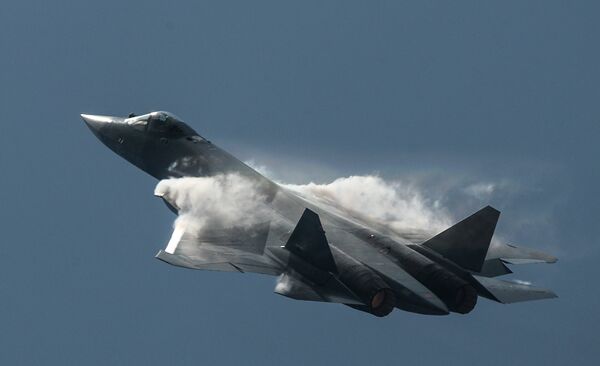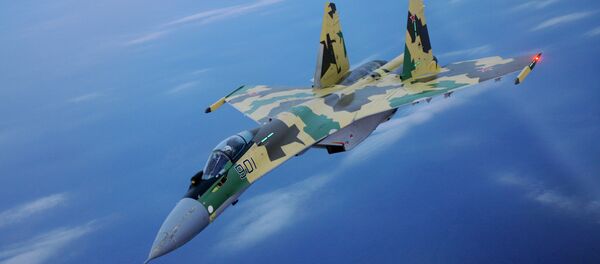The F-16 is "seriously outmatched by a new generation of Russian and Chinese fighters," he wrote for the National Interest.
The Su-35, a heavily upgraded version of the Sukhoi Su-27, is a 4++ generation aircraft produced since 2007. The warplanes completed their first combat missions in Syria earlier this year.
"The Su-35 may not be stealthy, but it can detect and engage the F-16 before the F-16 can detect it, and this puts the American plane at a big disadvantage. In a one-on-one fight, the F-16 will probably not even be able to get the Su-35 into dogfighting range, where the smaller fighter's legendary maneuverability would come into play," Mizokami explained.
The fighter jet is meant to replace Russia's aging Mikoyan MiG-29s and Sukhoi Su-27s.
PAK FA's "stealthy design will ultimately mean F-16s won't even detect their adversaries before they realize they are being targeted by beyond-visual-range guided missiles, launched by aircraft only visible on radar for the brief moment their internal weapons bay doors are open," the analyst noted.
The F-16 could be upgraded to become more competitive, but the lack of stealth is the plane's ultimate weakness when compared to other advanced aircraft.
"Thanks to PAK-FA and the J-20, [the F-16] days as a day-one frontline fighter are over. As the F-35 enters service with the United States and with its NATO and Asian allies, the F-16 begins its long, well-earned flight into the sunset," Mizokami said.
